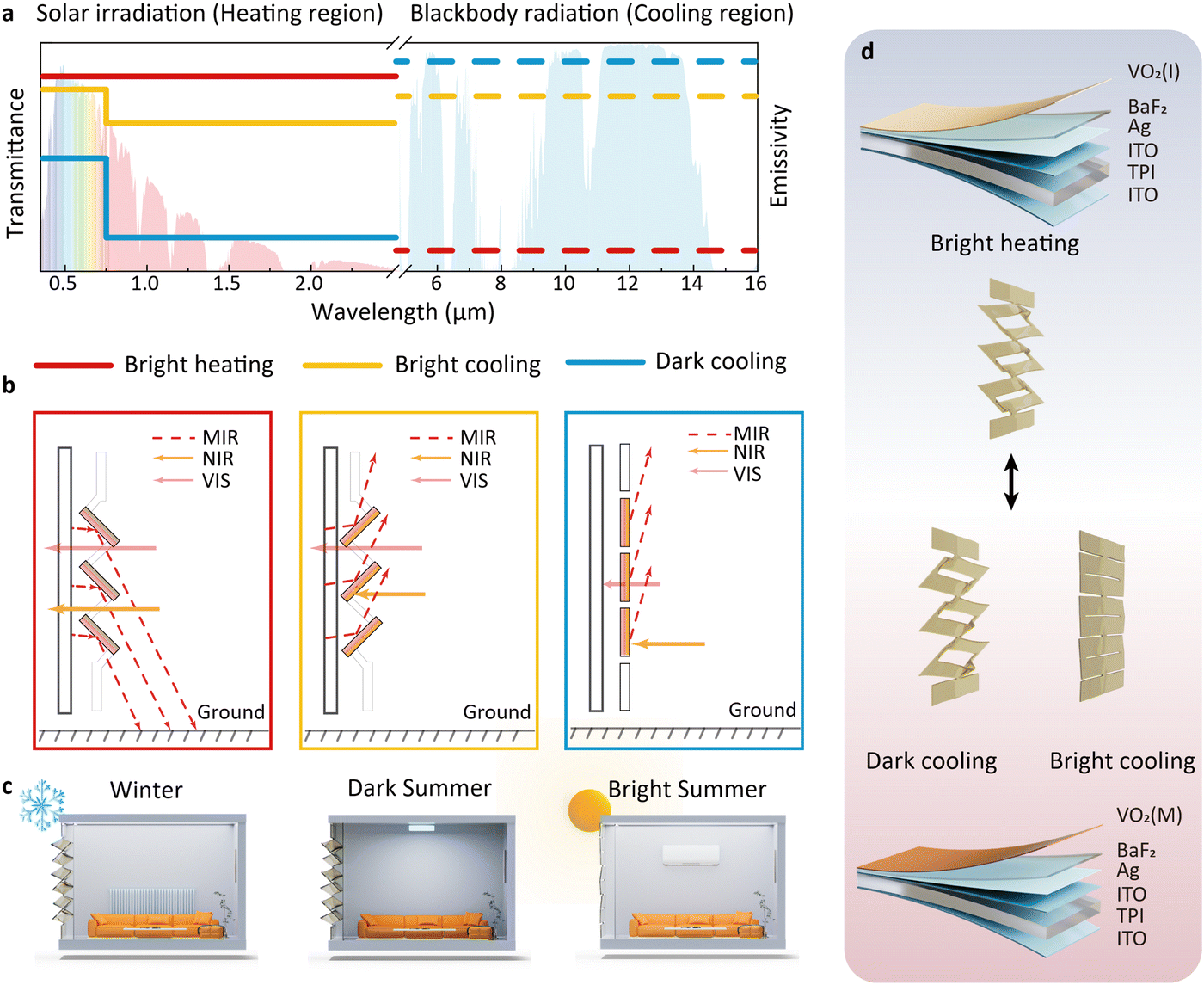
Congratulations to Tao Zhang for his contribution as the first author in Materials Horizons
Smart windows with multiband and directional thermal-radiation regulation are vital for reducing building energy consumption. However, conventional thermochromic designs are limited in spectral range and lack angular selectivity, constraining their energy-saving potential. Here, we propose a temperature-adaptive kirigami smart window envelope (TARK), which couples a VO₂ Fabry-Pérot cavity with a reconfigurable kirigami scaffold to achieve tri-band spectral modulation and controllable thermal-emission directionality. The device exhibits excellent performance, including a solar modulation efficiency of 31.10%, high mid-infrared emissivity in the hot state (0.96), and an infrared modulation amplitude of 0.63, with tunable emission angles enhancing thermal management. Building energy simulations across 22 climate zones show that, compared with Low-E windows, TARK can reduce HVAC energy consumption by up to 25.3% (average annual savings of 89.5 MJ/m2, maximum 171.9 MJ/m2). Outdoor tests further confirm its adaptability, achieving up to 11.7 ℃ cooling under hot weather and 1.1 ℃ heat retention during cold nights relative to standard glass. This work offers a practical pathway toward multifunctional, temperature-adaptive, and angle-selective smart windows for sustainable building energy management.
The research is published as “Tri-band smart window envelope based on temperature adaptive kirigami structure” in Materials Horizons, and Tao Zhang is the co-first author.
Link to original article:
https://pubs.rsc.org/en/content/articlelanding/2025/mh/d5mh01009h

Schematic diagram of device structure and mode

